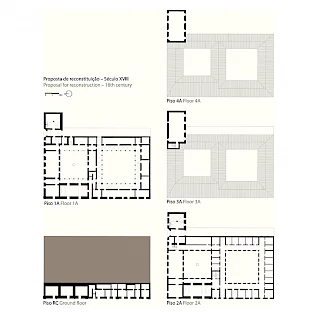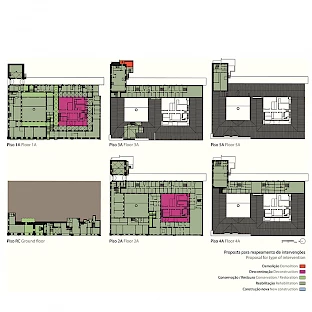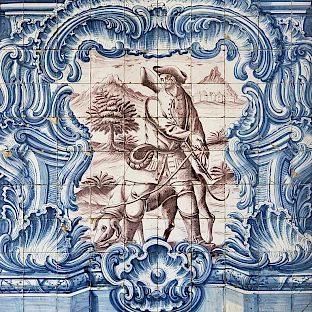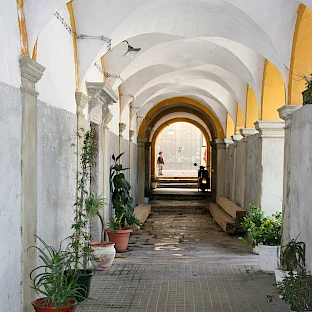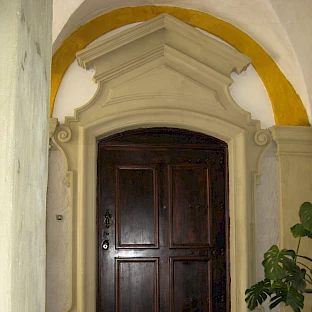Designation
Holy Spirit College
Current occupation
Commerce
Ownership
Privately owned
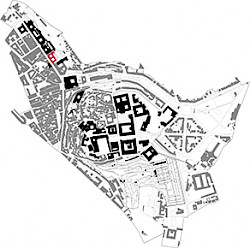
Art-historical characterisation
The construction of the College began in 1541, with work continuing throughout the second half of the 16th century, even after the solemn entry of the collegians in 1550.
Part of the ecclesiastical collegiate building typology, the facilities vital to its functioning — dormitories, refectories, kitchen, libraries and other teaching spaces — were organised around two cloisters of similar dimensions.
It was closed in 1834 with the extinction of the Religious Orders and, four years later, it was sold to private individuals. The new owners then embarked on a building campaign that transformed a large part of the original complex, preparing it to be used for a wide variety of functions. However, from 1838 onwards, in the northern part of the College, it was decided that a palatial residence, in the neoclassical style, was to be built in there.
Despite the many alterations it has undergone, the monument still retains important material evidence, such as the architectural structures of the south courtyard and various tile coverings.
Currently, this ancient building is currently privately owned and used for commercial purposes.
The university colleges
When the University was definitively established in Coimbra in 1537 by order of King João III, the city was endowed with a series of collegiate buildings designed to receive students. Essentially built by different religious orders and bishops, they were a mixture of convent and student residence, with dormitories, refectories, study rooms, cloisters and churches. The first seven buildings in Rua da Sofia were joined by many others in the upper part of the city, totaling 25 in the 18th century.
In 1834, as part of the ‘General Ecclesiastical Reform’, all convents, monasteries, colleges and religious houses of all religious orders were abolished and their assets incorporated into the National Treasury. Many were reused as military barracks, hospitals, railway stations, etc., others were sold at public auction and bought by private individuals. In all cases, the change in functions and uses was radical.



